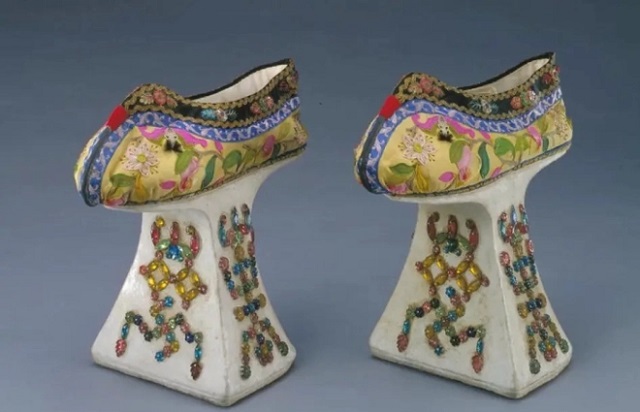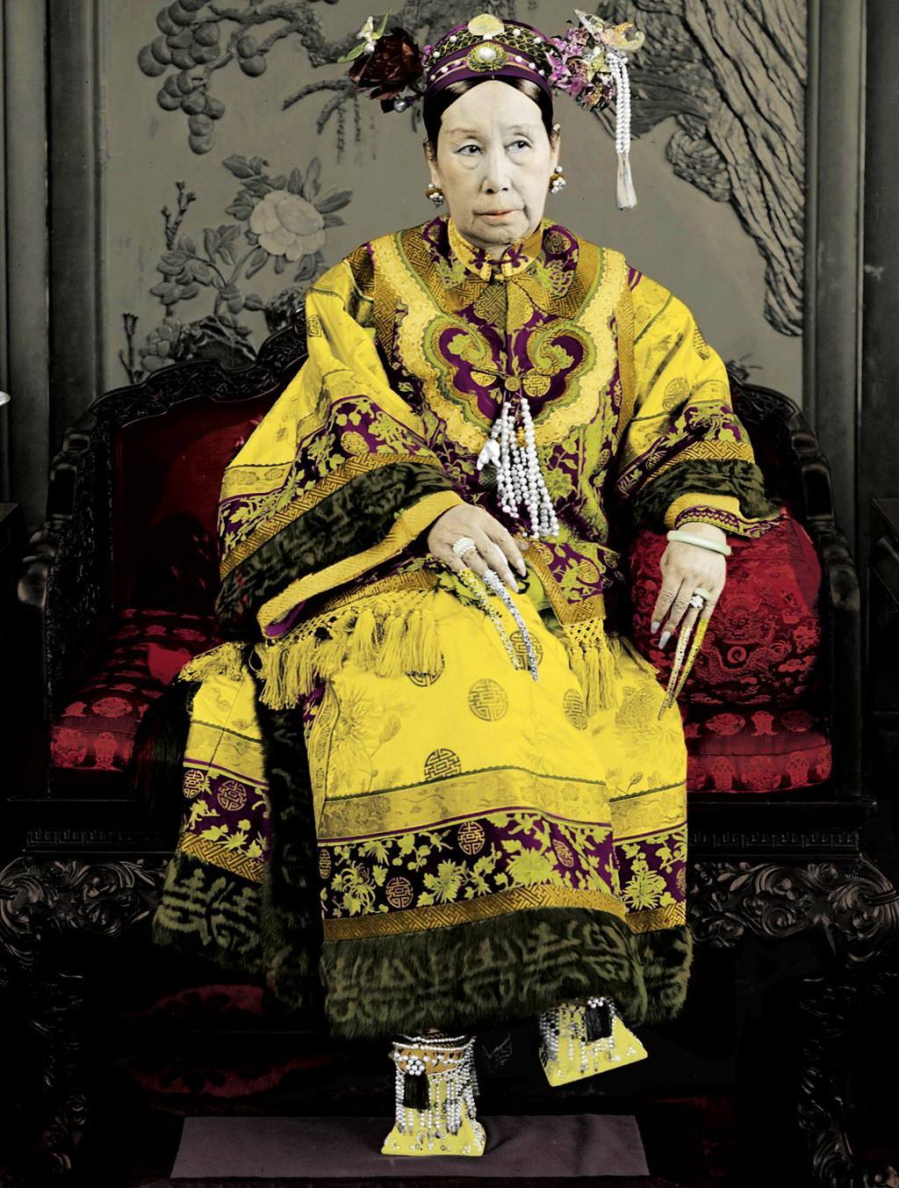The intricately designed head patterns and glamorous attire, paired with the small “flowerpot” shoes, are considered the typical costumes for concubines and young ladies in period dramas about the Qing Dynasty that many have seen. But what makes people curious about why women’s shoes during that period were designed high and unstable, resembling a “flowerpot”, and caused difficulty in movement?
Flowerpot Shoes – A historical pair of shoes that demonstrates the unique craftsmanship of ancient people
The flowerpot shoes of Manchu women in the Qing Dynasty stood out with their characteristic wooden or gemstone soles, tall and heavy yet delicate and slippery, not truly practical for normal shoe use.
In fact, the upper part of the flowerpot shoes was quite small and narrow according to the aesthetic standards of the Manchu people at that time, who preferred small and beautiful feet. They didn’t bind their feet, but they favored wearing tight shoes to make their feet appear smaller. The wooden sole, or “tahan” in Manchu, was made from solid wood, very durable and resistant to wear.

Although the upper part of the shoes could be worn out, the wooden sole remained intact over the years. This sole was often wrapped in white fabric or painted white, with the ground contact part made of coarse bark or thick fabric to enhance comfort and grip.
Shoes for women in the late Qing Dynasty were often elaborately decorated on the shoe vamp with embroidered patterns, frills, and even the wooden sole was meticulously adorned with gemstones and intricate designs. Sometimes, they hollowed out the wooden sole or inserted bells inside to create sound while walking, or filled it with fine sand and small holes to imprint patterns on the ground while walking, creating unique imprints like flowers or butterflies.

What is the purpose of the flowerpot-shaped sole?
In the late Qing Dynasty, women’s flowerpot shoes were classified into two types based on the height of the wooden sole: “flower vase sole” shoes and thick sole shoes. The “flower vase sole”, also known as high-sole shoes, is the most famous type, with a minimum sole height of 7 cm, equivalent to modern high heels. When combined with the upper part, a pair of shoes could reach a height of up to 20 cm.
The flowerpot sole is designed wide at both ends and narrow in the middle, resembling the shape of an hourglass. The center of gravity is placed in the middle of the foot, with a very small ground contact area and often over 10 cm high, making it extremely difficult and hindering the movement of women.
However, the difficulty in walking required women to move cautiously, gently, and gracefully, thereby creating exquisite beauty and elegance when combined with clothing. This turned walking in flowerpot shoes into a valuable skill that showcased sophistication and gracefulness, while limiting steps to maintain a glamorous posture. Skillful walking became an expression of high social status, with restricted movement clearly demonstrating refinement and the ability to remain within the confines of a room.

During the late Qing Dynasty, women began wearing flowerpot shoes at the age of 13 or 14, not only in the imperial palace but also among the upper class. According to the beliefs of the Manchu people, wearing flat-soled shoes was not appropriate for women unless they belonged to the poor class. Girls didn’t have to bind their feet, but the flowerpot shoes still limited them as a form of “restraint”.
Interestingly, shoes with similar high soles like the “flower vase sole” also appeared in Japan, Europe, and other places, originally serving the purpose of preventing dirt from mud and stains, but gradually they became ostentatious and impractical.



































